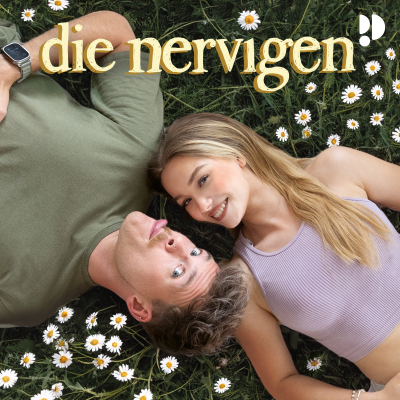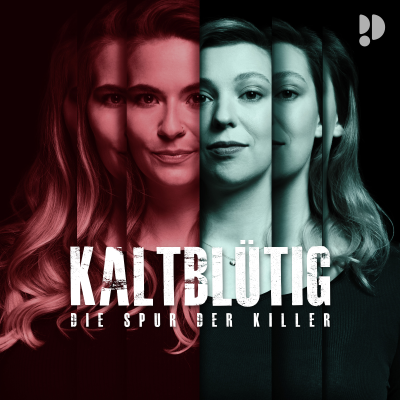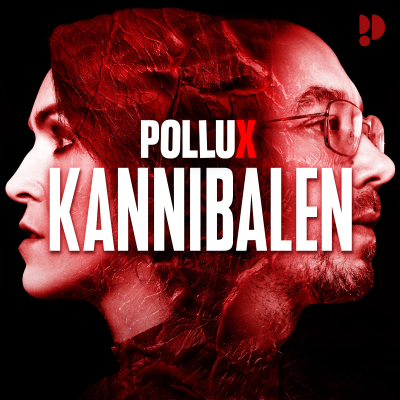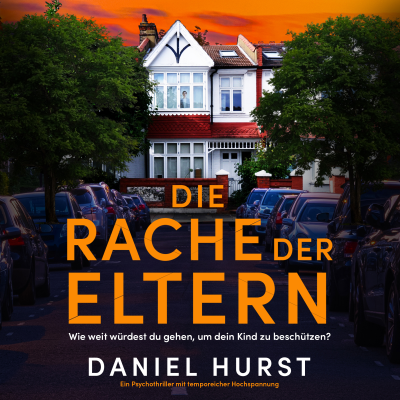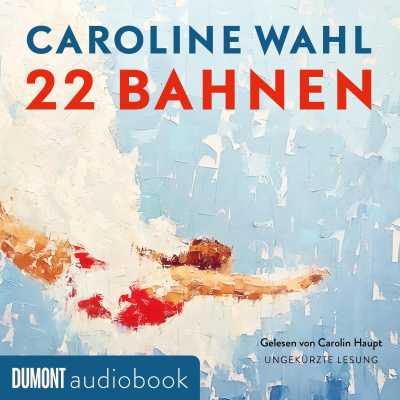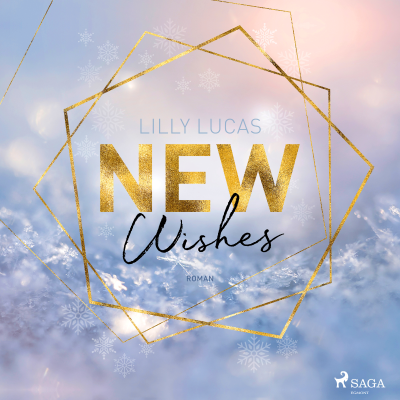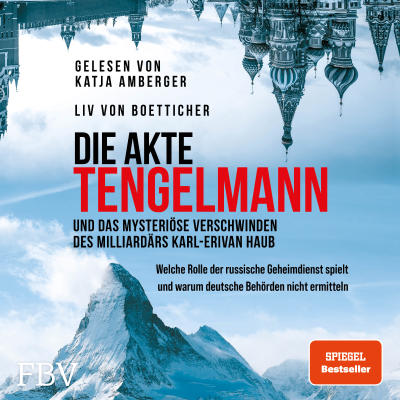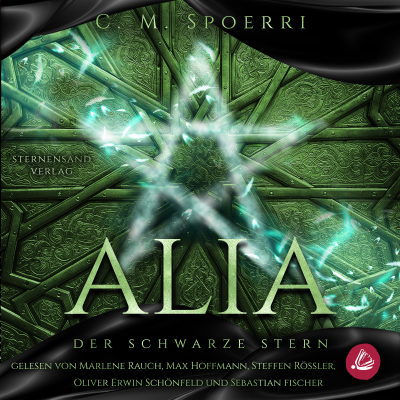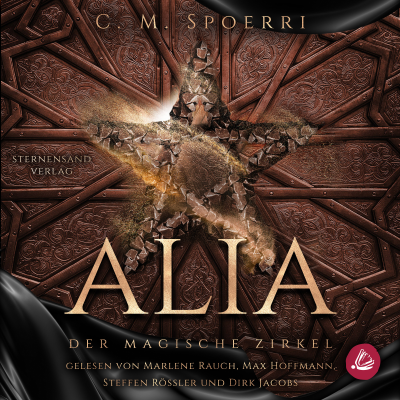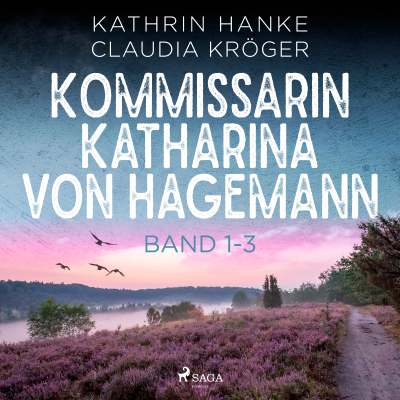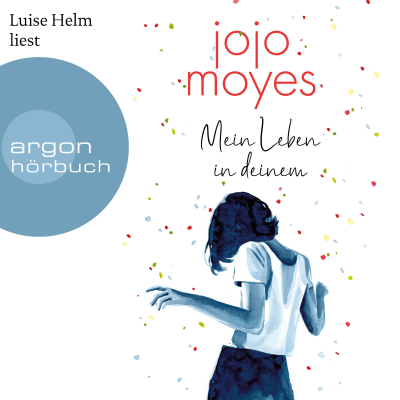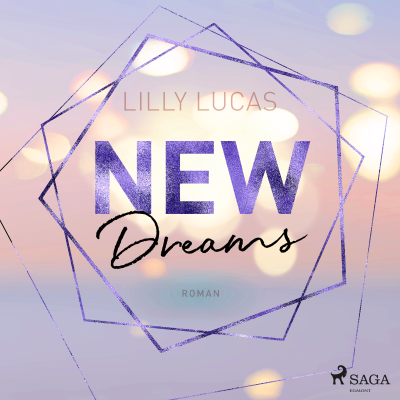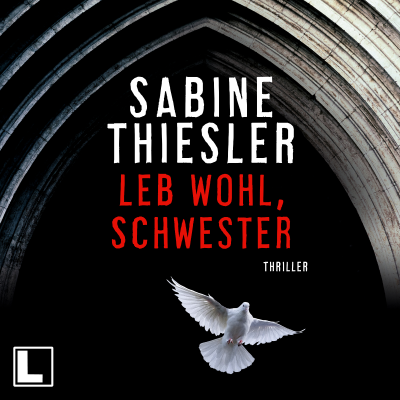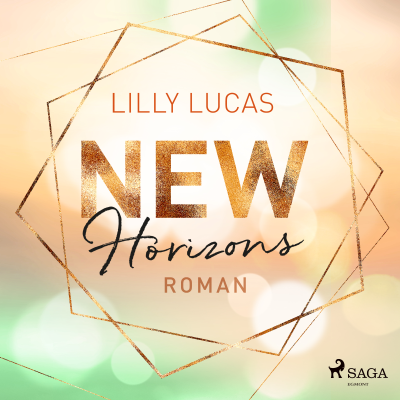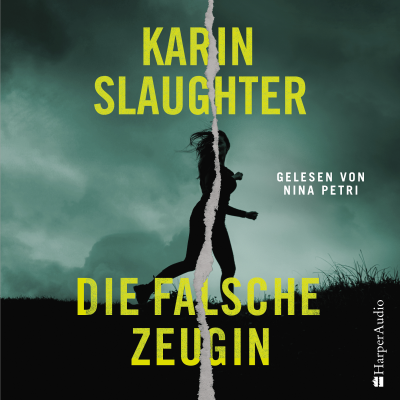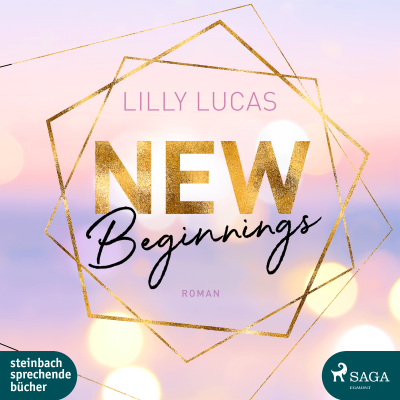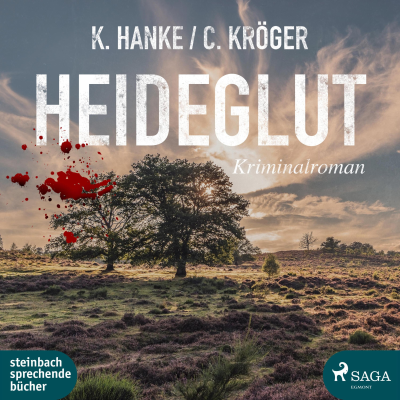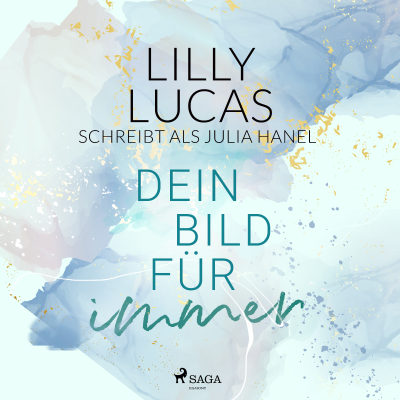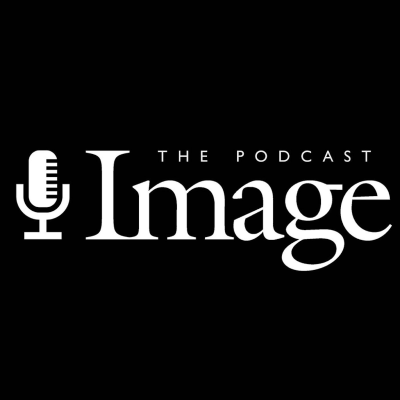
Kostenlos testen für 30 Tage
4,99 € / Monat nach der Testphase.Jederzeit kündbar.
Alle Folgen
15 Folgen[/wp-content/uploads/2018/11/Carey-Wallace_-90292-9x12.jpg] Carey Wallace is the author of The Blind Contessa’s New Machine, [https://www.amazon.com/Blind-Contessas-New-Machine-Novel/dp/067002189X] which tells the story of the invention of the typewriter in 1808 by an Italian count for a blind woman so that she could write him letters. It’s a love story, but it’s also about the imagination and how it fails us. Patti Smith, one of Wallace’s heroes, called it “exquisitely written” and “a jewel.” [https://www.theguardian.com/books/2019/oct/19/patti-smtih-reading-mark-twain-gave-me-anxiety] Now Wallace has trained her focus on artistic inspiration, both how it is historically discussed in relationship to artists, and how we as contemporary working artists might honor, cultivate, and capture it. She taught a workshop called “The Discipline of Inspiration” at the 2019 Glen Workshop in Santa Fe, and she’s working on a book of the same title. Wallace is particularly interested in how spiritual disciplines like silence, rest, and living in community map onto the artist’s life. She wrote in an essay for Comment: [https://www.cardus.ca/comment/article/on-discipline/] > “All spiritual problems are creative problems, and all creative problems are spiritual problems . . . an artist’s failure to work is rarely mechanical—fingers that fail to curl around a pen or a brush—but spiritual: a fear that has rendered them artistically blind or deaf. The solution to them all is to draw closer to God, the source of all order, rest, and freedom, and of every image, sound, and word.” Wallace sat down with Jessica Mesman at the Glen to talk about “catching” inspiration, cultivating community, and how our creative power grows when we discipline our artistic and spiritual lives—and begin to see them as one and the same. Resources * Carey Wallace [http://www.careywallace.com/biography/biography.html] * “On Discipline” by Carey Wallace [https://www.cardus.ca/comment/article/on-discipline/] * Patti Smith on The Blind Contessa’s New Machine by Carey Wallace [https://www.theguardian.com/books/2019/oct/19/patti-smtih-reading-mark-twain-gave-me-anxiety] * More on setting boundaries and making friends, via Brain Pickings * The Glen Workshop [/glenworkshop-2020/] * Original music composed bySister Sinjin [https://www.sistersinjin.com/] * Episode produced byCassidy Hall [https://cassidyhall.com/] Don’t miss an episode: subscribe now oniTunes [https://itunes.apple.com/us/podcast/episode-2-gina-ochsner-and-the-power-of-useless-art/id1248475220?i=1000389395658&mt=2]orGoogle Play [https://play.google.com/music/listen?pcampaignid=MKT-na-all-co-pr-mu-pod-16#/ps/Iiksupjro3pty72zsmlo3hw7gym]. Be sure to leave us a review and let us know what you think. Become a Patreon supporter onPatreon.com/ImagePodcast. [https://www.patreon.com/ImagePodcast] The post The Spiritual Discipline of Inspiration: Carey Wallace [https://imagejournal.org/2019/11/24/the-spiritual-discipline-of-inspiration-carey-wallace/] appeared first on Image Journal [https://imagejournal.org].
[/wp-content/uploads/2018/11/Lanecia.jpg] Lanecia Rouse Tinsley is an abstract artist based in Houston, Texas. She creates out of a desire to make the invisible landscapes within us known, using texture, form and color to speak to life in ways she feels words cannot. She says she is drawn to the “negative spaces” in life—times of ambiguity and uncertainty, silence and mystery. A graduate of Duke University Divinity School, Tinsley was a pastor’s kid who became a pastor herself. (Her father was the first cross-racial appointment in South Carolina in the United Methodist Church.) She always found ways to bring the arts into her ministry, but she knew she wanted to be the one creating art that offered new ways of seeing. She also wanted to have children. But when her infant daughter, AJ, died shortly after her birth, Tinsley faced a turning point. How was she going to survive this grief? How could she imagine a life in which she wasn’t merely surviving, but thriving? > “I’d felt pain. My heart had been broken before, but this was a new kind of breaking.” Tinsley left ministry to become a full-time visual artist. The journey through grief remains a daily experience for her, but in her art practice she’s found a way to express what she feels so that it doesn’t imprison her, but instead opens a door that others can enter. > “I always thought, there’s life in the boundaries. But now I realize that I want less and less of that. I want to figure out ways of creating more space for myself to be who I am to be in this world, to see the holy in me and the holy without me.” [/wp-content/uploads/2019/11/p793-300x200.png] Tinsley and I sat down at the Glen Workshop, where she teaches mixed media and painting, to talk about the creation and experience of art as ways to lean into prayer; the artists who minister to her pain and remind her to feel joy–including Rothko, Alma Thomas and poet Mary Oliver; and how the interdisciplinary collaboration that happens at the Glen Worksop inspires us. Tinsley works to make that kind of communal experience more accessible to more artists and people in her own community. She works with projectCURATE [http://www.projectcurate.org/]in Houston as a Spiritual Director and Consultant for the Arts. She is also co-founder of the ImagiNoir Group, an international alliance and think-tank of black activists, artists, writers, scholars and educators. > “I can’t imagine going through what I went through without knowing love was real.” Resources * “Gird Yourselves, Yet Be Shattered” by Natalie Vestin, on Tinsley’s Advent paintings [/2016/12/22/gird-yet-shattered/] * The Rothko Chapel [http://www.rothkochapel.org/] * Cy Twombly Gallery [https://www.menil.org/campus/cy-twombly-gallery] * Ed Clark [http://artistedclark.com/] * Helen Frankenthaler [http://www.frankenthalerfoundation.org/artworks/paintings] * Alma Thomas [https://americanart.si.edu/artist/alma-thomas-4778] * Jeffrey Gibson [https://www.jeffreygibson.net/] * Mary Oliver, “The Sunflowers” [http://www.dotwebb.com/drdot/sunflowers_oliver.html] * Follow Lanecia Rouse Tinsley’s process on Instagram [http://instagram.com/larartstudio]. * Original music composed bySister Sinjin [https://www.sistersinjin.com/] * Episode produced byCassidy Hall [https://cassidyhall.com/] Don’t miss an episode: subscribe now oniTunes [https://itunes.apple.com/us/podcast/episode-2-gina-ochsner-and-the-power-of-useless-art/id1248475220?i=1000389395658&mt=2]orGoogle Play [https://play.google.com/music/listen?pcampaignid=MKT-na-all-co-pr-mu-pod-16#/ps/Iiksupjro3pty72zsmlo3hw7gym]. Be sure to leave us a review and let us know what you think. Become a Patreon supporter onPatreon.com/ImagePodcast. [https://www.patreon.com/ImagePodcast] The post Opening the Door: A Conversation with Abstract Painter Lanecia Rouse Tinsley [https://imagejournal.org/2019/11/12/opening-the-door-a-conversation-with-abstract-painter-lanecia-rouse-tinsley/] appeared first on Image Journal [https://imagejournal.org].
[/wp-content/uploads/2019/10/mathew-macquarrie-u6OnpbMuZAs-unsplash-1536x1024.jpg] Halloween kicks off the Octave of the Dead, eight days when Christians traditionally prayed for the souls of the departed. [https://anglicanway.org/2017/11/05/octave-of-all-saints/] For this episode of the podcast I talked to Elizabeth Harper, whose essay, “The Cult of the Beheaded,” in Image 102, [/article/beheaded/] explores one culture’s particular history of praying with the remains of the dead. When she traveled to Palermo, Sicily, she found a story of popular piety subverting the intentions of the Spanish Inquisition—and of nationalism, racism, and the ever-shifting sands of who belongs in the church, in the canon of the saints, and in your neighborhood. [/wp-content/uploads/2019/10/uhQAzXYP.jpg]Elizabeth Harper Harper started out writing about relics for places like Atlas Obscura [https://www.atlasobscura.com/] and her blog, All the Saints You Should Know [http://www.allthesaintsyoushouldknow.com/about]. She imagined she’d be helping travelers interested in seeking out something off the official tour map and artists, like herself, who were drawn to religious sites. But as she wrote more about traditional Catholicism, she noticed that far-right, Nationalist, and anti-Semitic readers began to follow and retweet her. In “The Cult of the Beheaded,” she attempts to unravel the complicated appeal of folk practice as both capitulation to—and resistance to—Christianity as state religion. > “I believe Catholic churches are memory theaters where nature, science, arts, humanity, math, politics, and the divine mingle in miniature. There’s a wealth of knowledge locked inside sacred objects, though it’s often hidden in plain sight.” She also talks in this episode about her favorite saints—official and not so official—and about her work in the “death positivity” movement, and why we, as Catholic memoirists, should anchor our personal stories in our collective history, approaching the real horrors in the church with humility and contrition. > “I’ve found that the Catholic comfort with death and death imagery is life-affirming. It offers believers and skeptics alike an important cultural reference that opposes modern death denial.” At around the thirty-minute mark, we talk about Harper’s work with the Order of the Good Death. The practice of memento mori [http://www.orderofthegooddeath.com/faces-death-elizabeth-harper]—meditating on one’s death [http://www.orderofthegooddeath.com/faces-death-elizabeth-harper]—has a rich Christian history. The new “Death Positivity” movement is being led by secular champions like author and mortician Caitlin Doughty, [http://caitlindoughty.com/] who recognize that our cultural fear of death, and our resistance to talking openly about it, was killing us. We’ve lost important rituals and cultural frameworks—thears moriendi, or art of dying—and that only makes coping with death more difficult and more dangerous. I ask Elizabeth Harper how her faith makes her approach to death positivity different. RESOURCES * All the Saints You Should Know [http://www.allthesaintsyoushouldknow.com/] * Elizabeth Harper, “The Cult of the Beheaded” [/article/beheaded/] * Elizabeth Harper on Uncle Vincent of Naples [https://www.laphamsquarterly.org/roundtable/reach-out-and-touch-faith] * Elizabeth Harper on Catherine of Siena [http://www.pleaseholdmagazine.com/elizabeth-harper.html] * The Order of the Good Death [http://www.orderofthegooddeath.com/faces-death-elizabeth-harper] * Original music composed bySister Sinjin [https://www.sistersinjin.com/] * Episode produced byCassidy Hall [https://cassidyhall.com/] Don’t miss an episode: subscribe now oniTunes [https://itunes.apple.com/us/podcast/episode-2-gina-ochsner-and-the-power-of-useless-art/id1248475220?i=1000389395658&mt=2]orGoogle Play [https://play.google.com/music/listen?pcampaignid=MKT-na-all-co-pr-mu-pod-16#/ps/Iiksupjro3pty72zsmlo3hw7gym]. Be sure to leave us a review and let us know what you think. Become a Patreon supporter onPatreon.com/ImagePodcast. [https://www.patreon.com/ImagePodcast] The post Keep Death in Halloween: A Conversation with Elizabeth Harper [https://imagejournal.org/2019/10/27/keep-death-in-halloween-a-conversation-with-elizabeth-harper/] appeared first on Image Journal [https://imagejournal.org].
“I’M NOT ON A MISSION TO CHANGE PEOPLE WHEN I WRITE, I’M ON A MISSION TO BE IN LOVE.” – JEFFREY OVERSTREET Jeffrey Overstreet wasn’t allowed to watch movies growing up, but his Christian parents did take him to the public library every Friday night. Intrigued by the ads he saw for movies in the daily paper, he started reading the reviews. He discovered film criticism before he discovered films themselves. Morgan Meis’s story is almost the mirror image of Jeff’s. He grew up with lapsed Catholic parents who were suspicious of religion; for them, art was where you went to find truth. But they both longed for deeper friendship. To cope with the loneliness of an isolated childhood, Jeff turned to writing, creating stories of a community of friends. Rather than being led away from Christianity, he found that the arts enhanced his faith. Today he’s an award-winning arts critic, memoirist and novelist. [/wp-content/uploads/2019/10/IMG_0303-768x1024.jpg]Jeffrey Overstreet and Morgan Meis at the Glen Workshop Morgan found himself always looking for that something more within the artistic communities he participated in and created. In his 30s, he started going to Catholic Mass, and he found that religious practice enhanced, rather than limiting, his experience as an artist. In addition to writing about art for Image, the New Yorker, and Harpers, he’s a part of a group of urban Franciscans called the New Order of Saint Francis, who serve the poor on the streets of Detroit. When you meet Jeffrey, in his Dr. Strange t-shirt and jeans, and Morgan, in his three piece suits, they may seem like an unlikely pair of friends. But a shared vision brings them together. They’re also both long-time writers for Good Letters, where Image publishes essays about the intersection of art, faith, and personal experience online. We sat down at the Glen Workshop in Santa Fe to talk about the importance of artistic and spiritual friendships to our work and faith, how both church and friendship have served to break us down and put us back together, and how our favorite films do that too: from Mike Leigh’s Another Year and the documentaries of French filmmaker Agnès Varda to The Muppet Movie. Resources: * Essays by Jeffey Overstreet for Image and Good Letters [/tag/jeffrey-overstreet/] * Essays by Morgan Meis for Image and Good Letters [/tag/morgan-meis/] * Lookingcloser.org (Jeffrey Overstreet on movies and media) [http://www.lookingcloser.org/] * “The Empty Bed” by Morgan Meis (an essay on British artist Tracy Emin) [/article/empty-bed-tracey-emin-persistent-self/] * Agnès Varda [https://www.bfi.org.uk/news-opinion/news-bfi/features/where-begin-agnes-varda] * Columbus [https://www.imdb.com/title/tt5990474/] * Another Year [https://www.youtube.com/watch?v=i81cxbYNHks] * Mikey and Nicky [https://www.youtube.com/watch?v=lda5kNLbozk] * Babette’s Feast [https://www.youtube.com/watch?v=H5w9skKcdnA] * The Muppet Movie [https://www.youtube.com/watch?v=dq6Q7K9uOPY] Credits: * Original music composed by Sister Sinjin [https://www.sistersinjin.com/] * Episode produced byCassidy Hall [https://cassidyhall.com/] Don’t miss an episode: subscribe now on iTunes [https://itunes.apple.com/us/podcast/episode-2-gina-ochsner-and-the-power-of-useless-art/id1248475220?i=1000389395658&mt=2] orGoogle Play [https://play.google.com/music/listen?pcampaignid=MKT-na-all-co-pr-mu-pod-16#/ps/Iiksupjro3pty72zsmlo3hw7gym]. Be sure to leave us a review and let us know what you think. Become a Patreon supporter on Patreon.com/ImagePodcast. [https://www.patreon.com/ImagePodcast] The post Friendship and Faith at the Movies: A Conversation with Jeffrey Overstreet and Morgan Meis [https://imagejournal.org/2019/10/14/friendship-and-faith-at-the-movies-a-conversation-with-jeffrey-overstreet-and-morgan-meis/] appeared first on Image Journal [https://imagejournal.org].
> “Molly McCully Brown’s first book of poems, “The Virginia State Colony for Epileptics and Feebleminded,” is part history lesson, part séance, part ode to dread…it is beautiful and devastating.” The New York Times Poet Molly McCully Brown’s [https://www.mollymccullybrown.com/] prizewinning first collection,The Virginia State Colony for Epileptics and Feebleminded [https://smile.amazon.com/Virginia-State-Colony-Epileptics-Feebleminded/dp/0892554789/ref=sr_1_1?ie=UTF8&qid=1493841591&sr=8-1&keywords=molly+mccully+brown], is about a real, state-run residential hospital for people with serious mental and physical disabilities that was the epicenter of the American eugenics movement in the first half of the twentieth century. All the poems are in the voices of imagined patients and staff on the Colony grounds in the 1930s. The result is a beautiful and excruciating consideration of the theological meaning of the human body in all its imperfection and suffering. The New York Times book critics named it a Top Book of 2017. [https://www.nytimes.com/2017/12/07/books/critics-favorite-books-2017.html] [/wp-content/uploads/2019/09/a71eb08b350426b2891f71e7eadd0246_XL.jpg]If she’d been born in another time, Molly Brown might have been a patient at the Virginia Colony. She grew up just a short drive away from that facility, and she was born with cerebral palsy, severely physically disabled. Her twin sister, Frances, died 36 hours after their birth. Brown’s essay, “Bent Body, Lamb [/article/bent-body-lamb/]”, originally published in Image 88 and our most-read essay of 2016 [/2017/01/18/images-16-read-2016/], begins with the author and her mother lying in the dark heat of their Virginia home on a summer night, enduring, together, the physical torment of Molly’s post-op leg convulsions. In a moment of despair and adolescent bravado—she was about 14 at the time—Molly turns to her mother and snarls, “God isn’t real,” and adds, with deliberate cruelty, “this is all your fault.” From the raw intimacy of that moment, the essay expands into a consideration of the meaning of bodily suffering and then to a comic, tender, and profound narration of how an intellectual “interest in religion” led, during her MFA program, to a sincere conversion to Catholicism. Molly Brown has two more books forthcoming in 2020: In the Field Between Us, a collection of collaborative poems about living in disabled bodies, written with Susannah Nevison, and an essay collection called Places I’ve Taken My Body. > “The writing I love most is the writing where you can see thinking in evidence. You can see the ways in which the piece itself is alive.” Molly McCully Brown We sat down at the Catholic Imagination Conference at Loyola University in Chicago to talk about her childhood in Virginia, the unexpected gifts of artistic friendship and collaboration [/journal/issue-100-2/], and how Catholicism responds, and doesn’t, to the problem of the body. Resources: * “Bent Body, Lamb” [/article/bent-body-lamb/] by Molly McCully Brown * Buck vs. Bell [https://en.wikipedia.org/wiki/Buck_v._Bell] * Central Virginia Training Center [http://www.cvtc.dbhds.virginia.gov/] * Susannah Nevison, Teratology [https://www.amazon.com/Teratology-Poems-Susannah-Nevison/dp/0892554584] * In the Field Between Us [https://www.inthefieldbetweenus.com/] by Molly McCully Brown and Susannah Nevison * “Proof, Matter, Stars” by Molly Brown and Susannah Nevison [/article/proof-matter-stars/] in Image 100 * Places I’ve Taken My Body [https://www.mollymccullybrown.com/]by Molly McCully Brown * Catholic Imagination Conference 2019 [https://www.luc.edu/ccih/2019catholicimaginationconference/] Credits: * Original music composed by Sister Sinjin [https://www.sistersinjin.com/] * Episode produced byCassidy Hall [https://cassidyhall.com/] Don’t miss an episode: subscribe now on iTunes [https://itunes.apple.com/us/podcast/episode-2-gina-ochsner-and-the-power-of-useless-art/id1248475220?i=1000389395658&mt=2] orGoogle Play [https://play.google.com/music/listen?pcampaignid=MKT-na-all-co-pr-mu-pod-16#/ps/Iiksupjro3pty72zsmlo3hw7gym]. For exclusive content, updates, and sneak peeks at future episodes, become a Patreon supporter on Patreon.com/ImagePodcast. [https://www.patreon.com/ImagePodcast] The post Belief and the Body with Molly McCully Brown [https://imagejournal.org/2019/09/26/belief-and-the-body-with-molly-mccully-brown/] appeared first on Image Journal [https://imagejournal.org].
Kostenlos testen für 30 Tage
4,99 € / Monat nach der Testphase.Jederzeit kündbar.
Exklusive Podcasts
Werbefrei
Alle frei verfügbaren Podcasts
Hörbücher
20 Stunden / Monat
